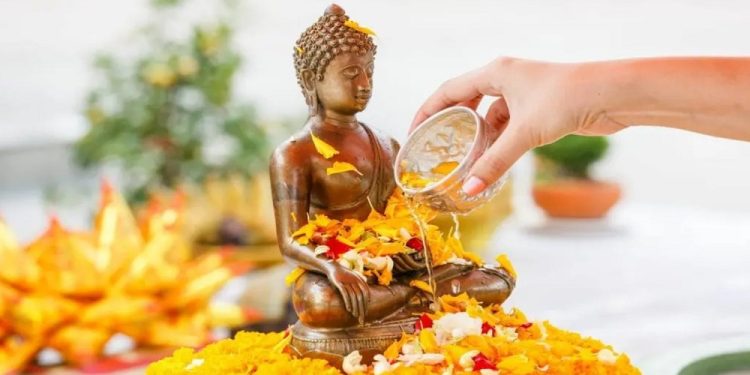
Theravada New Year
There are many different traditions and schools in Buddhism, and nothing explains that fact better than the realization that not all Buddhists celebrate the Theravada New Year. That’s because Buddhism is not a monolith, and the two major schools in Buddhism are Theravada and Mahayana.
Both of these different schools of thought believe in the basic tenets of Buddhism (dharma, karma, reincarnation, nirvana, the Eightfold Path, and the Four Noble Truths), but other details differ between these two schools. In essence, Theravada Buddhism tends to be more conservative than Mahayana Buddhism, and it is more focused on logic to reach nirvana than on compassion.
The Differences Between Theravada and Mahayana Buddhism
Let’s begin with Mahayana Buddhism. This type of Buddhism is commonly practiced in Northeast Asia, especially in Tibet, China, Japan, Korea, Mongolia, and Taiwan. This school of Buddhism believes that everyone can achieve enlightenment, regardless of whether they are in a monastic tradition or whether they are just an ordinary person. Mahayana Buddhists also tend to believe that compassion is the way to enlightenment and are willing to forgo their own enlightenment to help others on the Noble Eightfold Path.
In Theravada Buddhism, Buddhists strive to become perfected beings who gain true insight into the nature of reality to guide them towards nirvana. A perfected being in Buddhism is known as an arhat, and those who have achieved that position have followed the Noble Eightfold Path and have eliminated greed, ignorance, and hatred in themselves. This frees them from the cycle of rebirth and death known as samsara. In this tradition, freeing oneself from this cycle is the main goal.
It’s because of these two main differences that the two Buddhist schools follow different holidays, although there is an overlap between the two. Theravada New Year falls in mid-to-late spring, and Mahayana New Year tends to fall around the turn of the year. However, not all Buddhists follow one of these two New Year celebrations. Some opt to celebrate the Chinese New Year instead.
Observing Theravada New Year
For Buddhists in the Theravada tradition, this is a three-day celebration that begins around a full moon. Although most celebrations will vary from one location to another, many Buddhists incorporate rituals that involve sand and water into the celebration. Some Buddhists may build sand hills that symbolize the home of the gods and the center of the universe, Mount Meru. People also pour water on statues of Buddha, and it is common to sprinkle perfumed water on their neighbors.
It is also common for some communities to build sand sculptures on riverbanks. Each individual grain of sand represents a wrongdoing, so when the river washes away the sand sculpture, it takes away the bad karma as well. In some Southeast Asian countries, the holiday is observed by purchasing captured birds, fish, or animals and then releasing them into the wild. This promotes good karma and shows compassion. People participating in this holiday are also expected to meditate on the birth, enlightenment, and death of Buddha.








